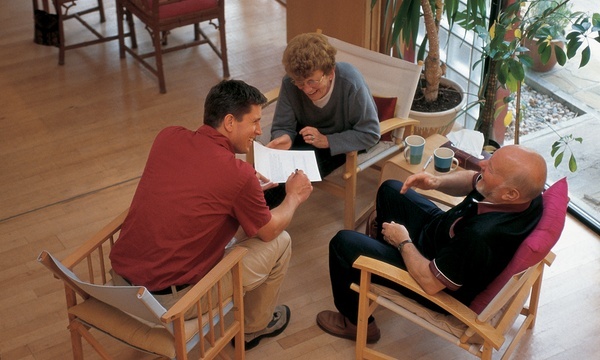Here we are again, about to turn our clocks back and return to standard time. It will be dark sooner. The days are getting shorter anyway and winter is drawing in.
For many of you this means the onset of Seasonal Affected Disorder – a type of depression that comes and goes according to the seasons. Also known as winter depression, it is usually at its most severe during December, January and February. i think we could all benefit from using the special daylight lamps and certainly (with professional guidance) from taking Vitamin D which, in this country we seem to be short of all year round. If you suffer severely from S.A.D. then you must see your GP, they can help. If you want to know more go here
Just a little SAD?
Most people I know seem to suffer a little bit from S.A.D. They might experience low moods more often, feel less enthusiastic, and struggle to get out of bed in the mornings. They say things like, ‘I always feel like this at this time of year. To those people I say – let’s try thinking about it differently this year.
If anybody knows about looooong daaaark winters it is the Scandinavians. In Denmark during the winter they often get as little as four hours daylight. They know how to deal with it. They make hygge
Hygge is pronounced hyoo ga and is very loosely translated as cozy. I get hygge, especially at wintertime. For me, right from the onset of autumn, the hygge feeling is heightened by a quickening sense of excitement for the coming of winter.
It’s a warm, contented fuzzy, sentimental, feeling. You know when you have just enjoyed a fabulous meal in great surroundings with people you love, and you take that deep contented sigh? That’s it. That’s hygge. Or, it’s taking ten minutes to sit by the fire or your own favourite spot to read a good book.
Hygge can be evoked in all kinds of ways. For the Danes it is a way of being that is embedded in their culture. We can take from it what we like and apply it to our own lives.
Here are some ideas that work for me.
- Make your home hyggeligt – hyoo ga li (the adjective) You are going to be spending more time at home during the winter so it needs to feel like a safe haven. Make it a clean, tidy and clear space, conducive to relaxation, somewhere you want to be.
- Use candles – lots of them. Nothing creates that lovely feeling of magic and mystery more than candlelight.
- Create or buy something beautiful. An artwork, a photograph, a sculpture or craftwork and display it prominently. Science has proven that looking at something we perceive to be beautiful raises the spirit.
- Turn off all technology. If you can, as a family commit to a certain amount of time, even just an hour without computers and, teenagers shriek with horror, turn off your phones!
- Eat dinner around the table and make it a whole evening event. When my kids were growing up, eating at the table was when we really managed to catch up with each others lives. It also gave us time to discuss more important ‘life issues’ in greater depth.
- The above with friends. Friends and family create hygge. Apparently, there is a tacit agreement when families come together in Denmark. Everyone commits to having a good time together. That means putting to one side any disagreements they might have, even if just for the evening. Perhaps not always easy to achieve, but the effort seems to be worth it.
- Cashmere socks! Or at least, very soft socks. Soft pyjamas or loungewear. This is a great one for me – snuggled underneath a woollen throw watching ‘Borgen’ on TV. Couldn’t resist the Danish connection there, but of course it could be any of your favourite box sets or films.
- Indulge in a guilty pleasure. Chocolate cake, for example, and only every now and then, of course.
I could go on but I think you get the message. Hygge is about creating a warm atmosphere for your self and also for your friends and people you love. Make the ordinary special and always have an event planned for the week ahead that you are looking forward to.
Danish anyone?
So, this year instead of expecting to feel gloomy, have the intention of modelling the Danes. Get hygge. Given that they consistently (for the last forty years) come top in the European commission’s well-being and happiness index, I think they might just have something to teach us. .
There are lots of books on Hygge
I bought this one because it includes fun illustrations and I thought it a lovely introduction.
HYGGE THE DANISH ART OF HAPPINESS by MT Soderberg http://amzn.to/2At5V82
Hope you enjoy – let me know what you think.
images https://www.flickr.com/photos/snugglepup/3313257064 www.flickr.com/photos/europealacarte/4702209023












